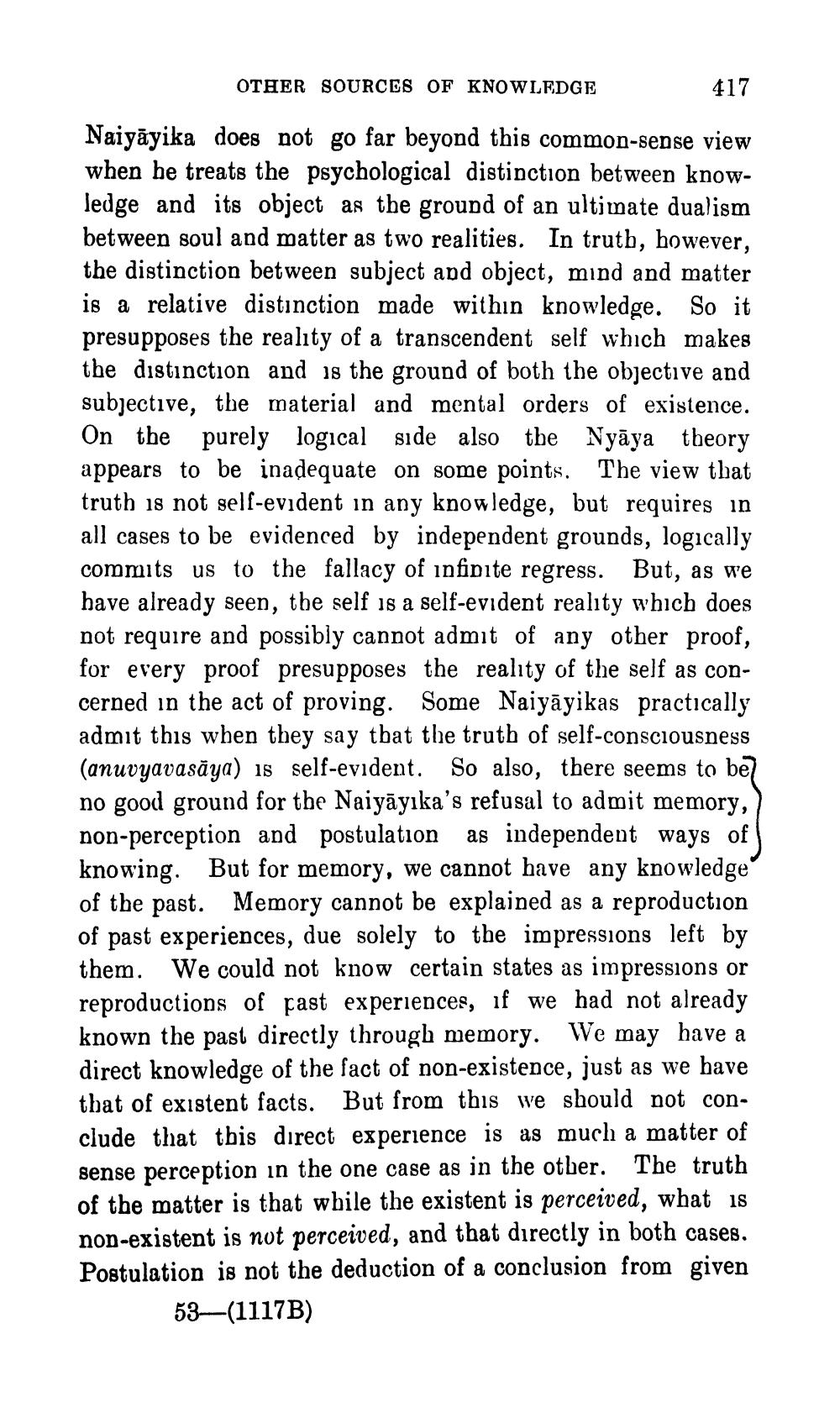________________
OTHER SOURCES OF KNOWLEDGE
417
Naiyāyika does not go far beyond this common-sense view when be treats the psychological distinction between knowledge and its object as the ground of an ultimate dualism between soul and matter as two realities. In truth, however, the distinction between subject and object, mind and matter is a relative distinction made within knowledge. So it presupposes the reality of a transcendent self which makes the distinction and is the ground of both the objective and subjective, the material and mental orders of existence. On the purely logical side also the Nyāya theory appears to be inadequate on some points. The view that truth is not self-evident in any knowledge, but requires in all cases to be evidenced by independent grounds, logically commits us to the fallacy of infipite regress. But, as we have already seen, the self is a self-evident reality which does not require and possibly cannot admit of any other proof, for every proof presupposes the reality of the self as concerned in the act of proving. Some Naiyāyikas practically admit this when they say tbat the truth of self-consciousness (anuvyavasāya) is self-evident. So also, there seems to be no good ground for the Naiyāyıka's refusal to admit memory, non-perception and postulation as independent ways of knowing. But for memory, we cannot have any knowledge of the past. Memory cannot be explained as a reproduction of past experiences, due solely to the impressions left by them. We could not know certain states as impressions or reproductions of past experiences, if we had not already known the past directly through memory. We may have a direct knowledge of the fact of non-existence, just as we have that of existent facts. But from this we should not conclude that tbis direct experience is as much a matter of sense perception in the one case as in the other. The truth of the matter is that while the existent is perceived, what is non-existent is not perceived, and that directly in both cases. Postulation is not the deduction of a conclusion from given
53—(1117B)




